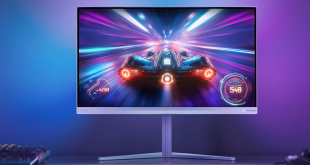AMD's R9 290 and R9 290X use XDMA Bridgeless Crossfire. No longer do you have to hunt around for a bridge connector, which is sure to prove popular with all of the high end gamers out there.
Without the Crossfire bridge connector on the 290/290X the Crossfire data and transfer is fed through the PCI Express bus that connects the cards to the system. AMD have said that this XDMA interface is a step forward for Ultra HD 4K because by accessing the graphics card memory through the PCIe interface they claim it will resolve sync issues and help improve bandwidth.
Today we are going to show some results by pairing up the R9 290 and R9 290X.

With both cards in the system, the Catalyst driver immediately detected and enabled Crossfire.


We overclocked the R9 290 to the same core clock speed of the R9 290X – from 947mhz to 1GHZ. This required a 5.5% clock increase. Both R9 290X and 290 fan speeds were set to a maximum of 55% in Catalyst Control Center.

As we detailed earlier in the review, there are some architectural differences between the R9 290X and R9 290 but we thought the ‘mixed' results on the following pages would be an interesting addition to the review.
The STREAM processor count has been reduced between R9 290X and 290, from 2,816 to 2,560. Texture units also get a downgrade, from 176 to 160. Both cards have 4GB of GDDR5 connected via a very wide 512 bit memory interface running at 1,250mhz (5Gbps effective).
 KitGuru KitGuru.net – Tech News | Hardware News | Hardware Reviews | IOS | Mobile | Gaming | Graphics Cards
KitGuru KitGuru.net – Tech News | Hardware News | Hardware Reviews | IOS | Mobile | Gaming | Graphics Cards



The price is great, but the cooler is certainly not……. waiting to see modified versions soon
The prices are hard to ignore, and its good to see Nvidia dropping prices lately too, they had been overcharging for quite some time now
I always wondered why they didn’t use a version of the HD7990 cooler. would have made more sense instead of something they probably used on a HD7850
Please, get rid of Furmark. It’s meant to stress GPUs at the max temperature before they are permanentely damaged. Nvidia drivers detect when Furmark is running and throttle their cards, so these results are biased. Measure real world power comsumption and temperature from games that are driven by different types of workloads – Rome: Total War 2, L4D 2, Battlefield 4 and GTA.
Hi Bob, it has never damaged any GPU in the years we have used it. and we only use it to supplement the temperatures from testing games.
I got AMD Radeon R9 290.. and it works great.. All games max graphics.. 😀 Thanks much